This couple live mortgage-free in the shipping container home they built
These first-time homebuilders created a metal masterpiece
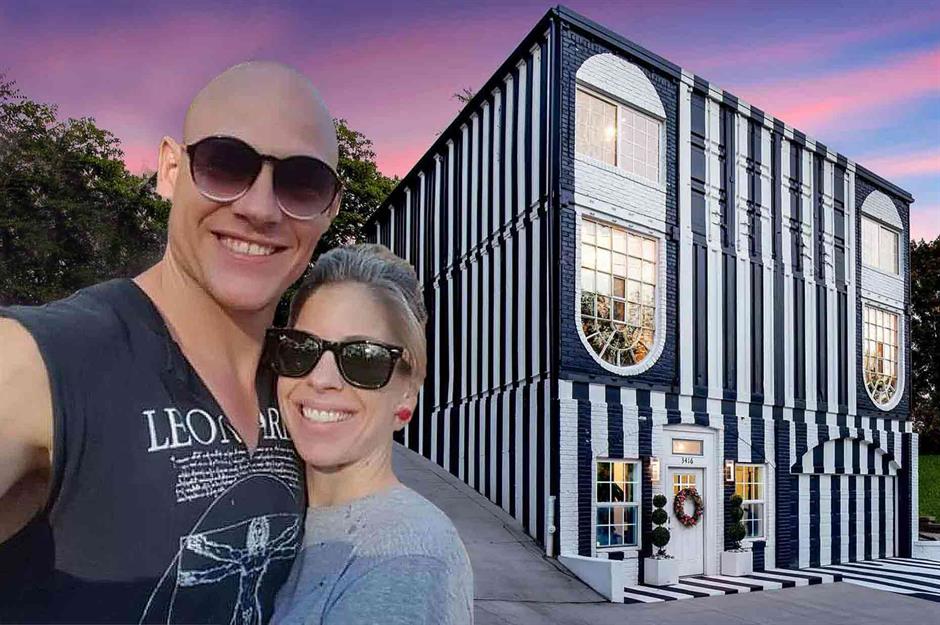
While they may be durable and budget-friendly, shipping containers aren’t usually considered the most elegant of building materials. But where others might have seen a utilitarian metal box, one couple saw the bones of a truly unique residence.
Undertaking almost all of the work themselves, first-time homebuilders Zack and Brie Smithey triumphed against the odds to create a metal masterpiece of a home where they could live mortgage-free. Click or scroll on to discover their remarkable journey...
A natural progression
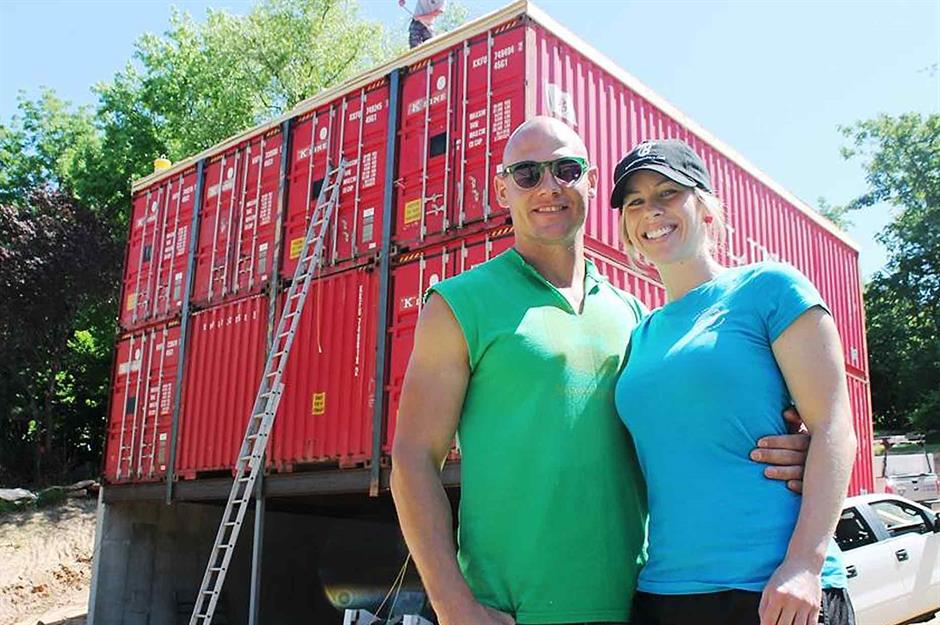
With three home renovations under their belt, building their own house felt like the next logical step for Missouri-based Zack and Brie. The pair are inherently creative – Zack is a professional interdisciplinary artist while Brie owns her own premium protein bar business – and they knew bricks and mortar weren't for them.
"We didn’t want to build with traditional materials… when we came across shipping containers they seemed to fit some of the themes we were trying to follow: recycle, repurpose and reuse," Zack explains.
Breaking ground

The couple had purchased an empty lot back in 2011 in St Charles, Missouri, so they already had the ideal place to bring their home to life. Stretching two-thirds of an acre, it only set them back $7,500 (£6.1k), crucially because it was sited on a large hill.
To level the plot, they had to excavate 2,500 cubic yards of earth – that's 200 truckloads of dirt – to create an amphitheatre in the hill for their 11-foot concrete foundation.
A different perspective
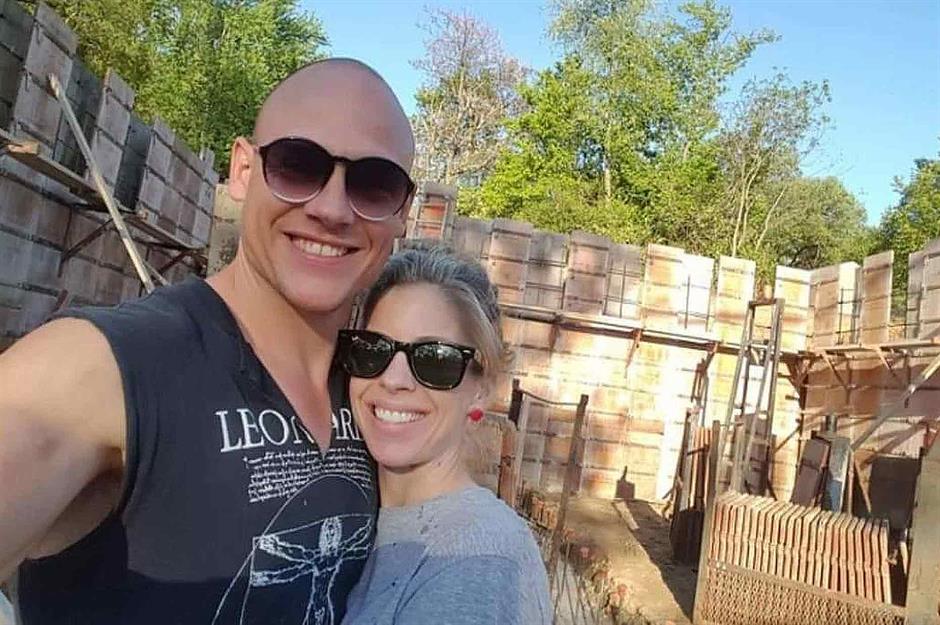
It's fair to say that the Smitheys tackled their project in a different way than most self-build beginners. Despite having no previous experience of homebuilding they took on almost all of the work themselves, from the design to construction.
“I’m a problem-solver and I love inventing things and figuring things out," reveals Zack. While he drew up plans, nothing was set in stone: they saw the structure as a giant sculpture that would shift and change organically as the build progressed.
Experimenting with the unconventional
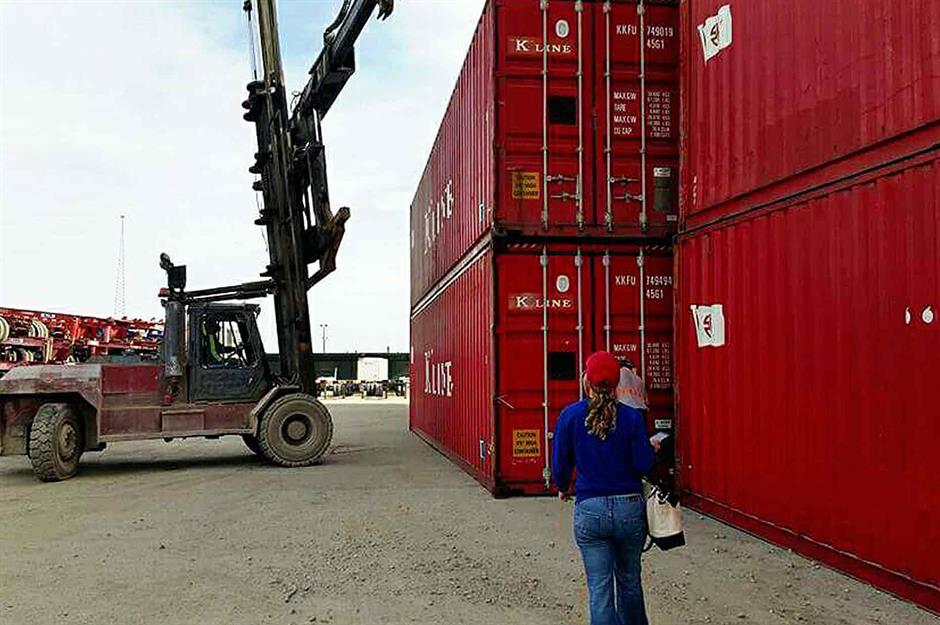
In total, they used eight shipping container cubes with nine-foot ceilings as the shell of their residence. Built in Shanghai, the units had travelled around the world 12 times before ending up in a container yard in St Louis, Missouri.
Snapping them up for $1,600 (£1.3k) each, plus a delivery fee of $150 (£122) per unit, the pair welcomed the challenge of working with an unusual homebuilding material. "When you choose a non-traditional material it opens up the door to creativity because you have to think how am I going to create using this as my constraint," says Zack.
Assembling the containers
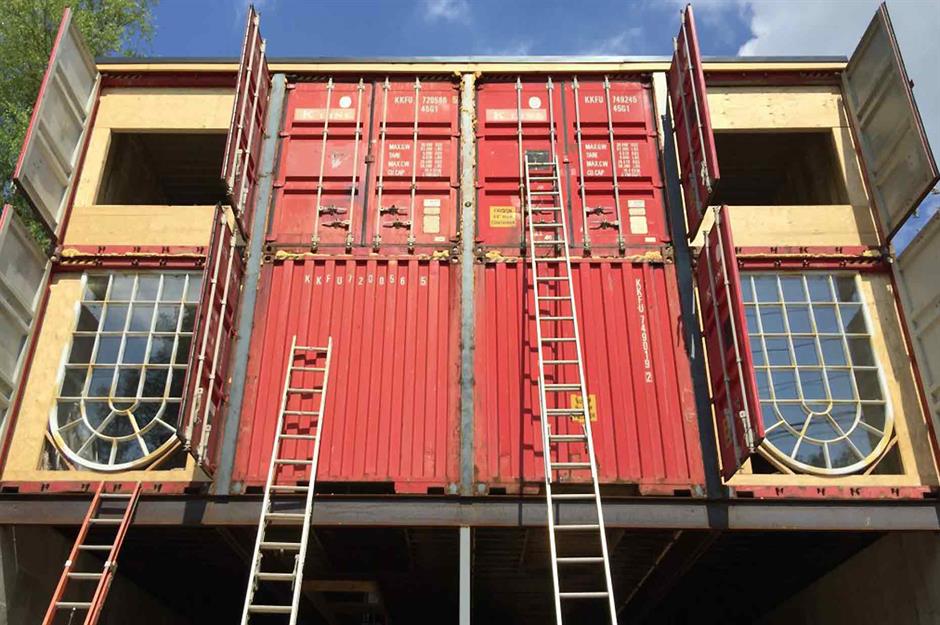
Trucks delivered the containers to the site one at a time and they were lifted into place by a crane and secured.
The main level comprises four containers plus a further four stacked on top to create the upper level, with a walk-out basement nestled beneath the units. With it being their first shipping container home, Brie and Zack wanted to keep the main structure simple and elaborate inside the property instead. “We treated it as an evolutionary process – we don’t have to go all out on the first one,” Zack reasons.
The centre of controversy
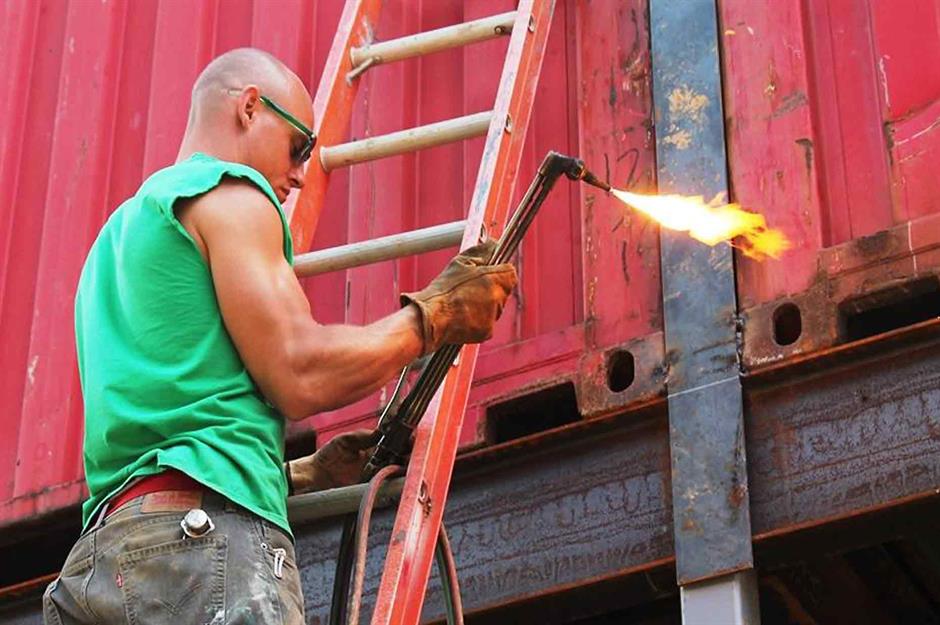
When the Smitheys began their project, the city of St Charles had no laws in place to prevent them from building a container home. However, as the red units were assembled, they began to turn heads. "I didn’t think that the entire city was going to weigh in on whether they loved it or hated it... we were just building our house," shrugs Zack.
Sadly, the city ended up passing ordinances that made it almost impossible for anyone in the future to follow in Zack and Brie's footsteps.
The perfect partnership
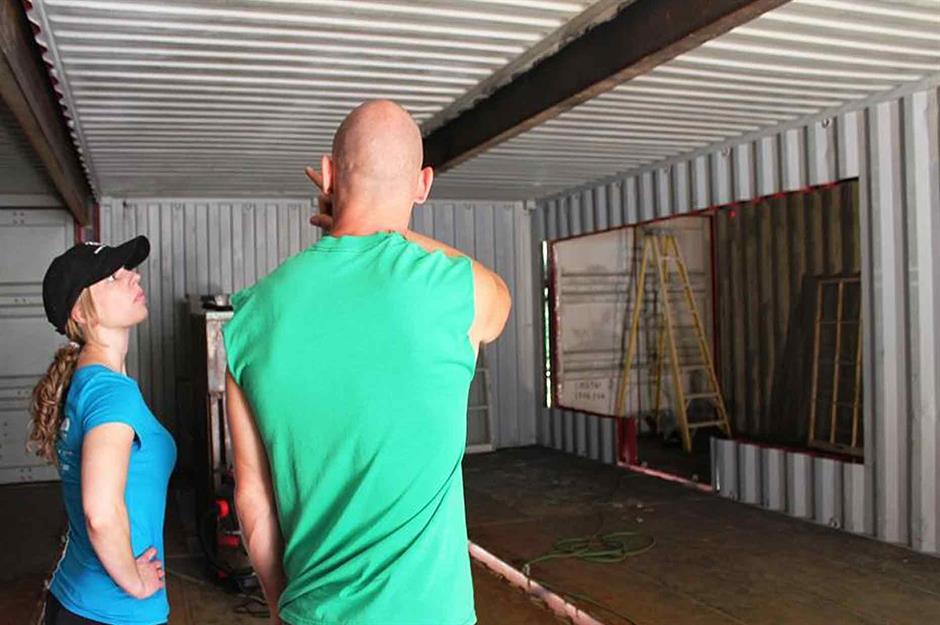
Despite the local furore, the couple's innovative project progressed. They had to rethink the design several times, bouncing ideas off of each other until they arrived at a plan that made the most efficient use of the space.
Zack explains: “Brie and I make a good partnership like that – I’ll come up with some crazy ideas and she’ll put it into context and reel me in if I’m too far out there.”
A learning curve
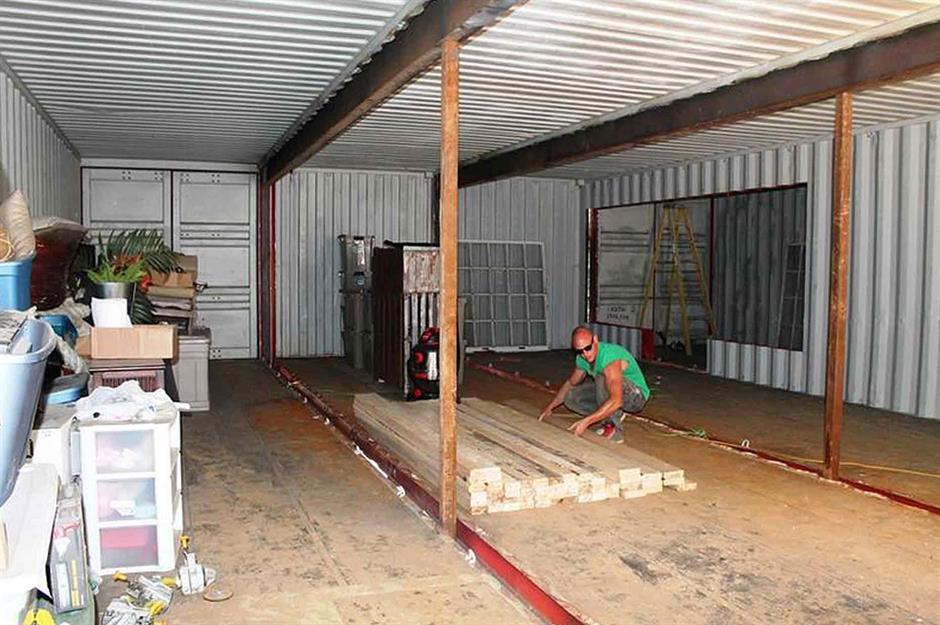
Nevertheless, Zack says the construction process was a steep learning curve: “I tackled each challenge as it came to me... the biggest physical challenge was cutting out and removing all of the steel walls because it was so physically demanding.”
Aside from help from a few friends, Zack shouldered the majority of the build himself, save the plumbing, electrics and heating. It meant working an exhausting 12 hours a day, seven days a week for the year and two weeks it took to complete the house.
Financial freedom
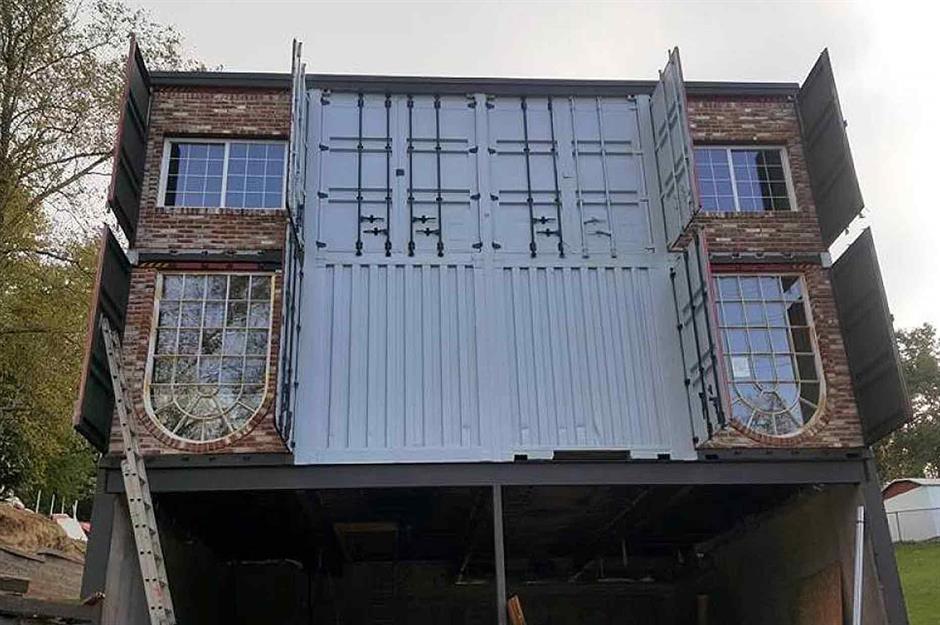
As the home was nearing completion, bricks salvaged from a 120-year-old house were added to the exterior, along with unusual upside-down windows.
Remarkably, the property's construction cost the couple just $135,000 (£110k) – in large part due to the amount of work they undertook themselves. They funded the project with the profits from their previous renovations, meaning they didn't even have to take out a mortgage.
Winning over the sceptics
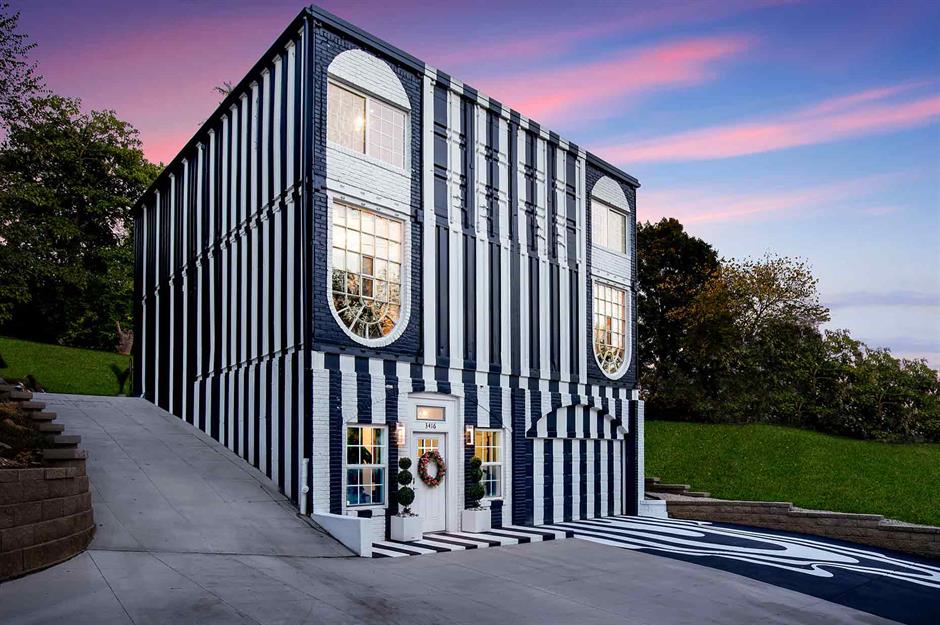
Zack and Brie's stunning shipping container home was finished on 20 May 2017, the morning of their open house. Over 2,000 people attended the event, which raised around $10,000 (£8.1k) for a local animal shelter.
"So many people told us that they’d changed their minds about it... that seeing the finished product they loved it and they’re so glad that we did this in their community because it’s something unique that adds to our city,” says Zack.
Graphic façade
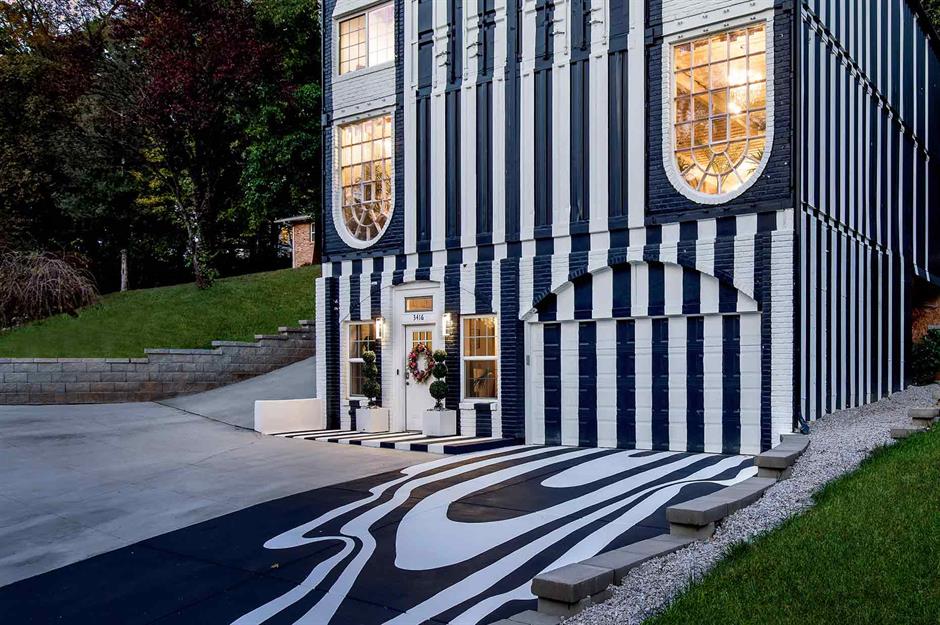
Following the home's completion, the pair decided to give the metal and brick exterior a graphic makeover to hide the mismatch of materials. "We unified it by painting it with the stripes, then you’re not distracted by the materials – they just become different textures", adds Zack.
The upside-down windows were mirrored in the paintwork, while the stripes extend down the driveway as though they're melting off the façade.
Enchanting entrance
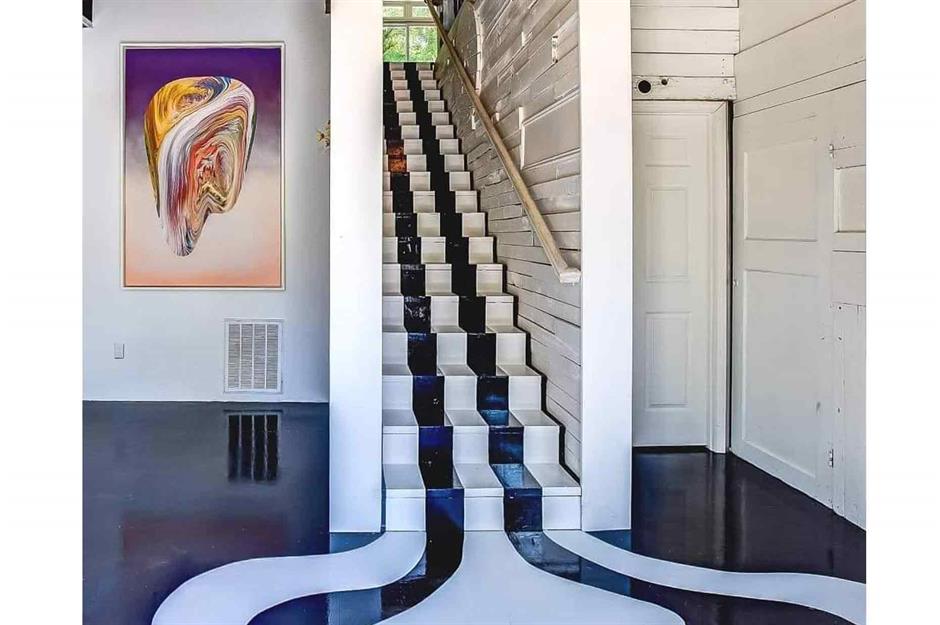
Encompassing 3,100 square feet spread across three storeys, Brie took the lead when it came to the home's interior design.
Stepping over the threshold, those eye-catching white and navy stripes dominate the main entrance in the walk-out basement too, with the contrasting hues pooling playfully at the foot of the staircase. The lower floor is also home to the garage, a utility room and a cosy living room.
Airy, open-plan living
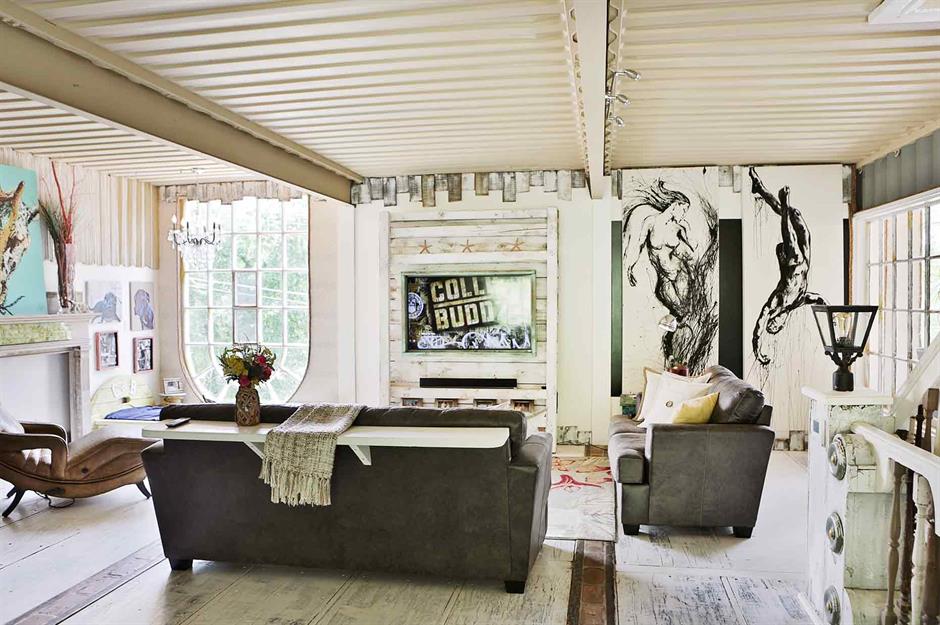
Upstairs, the main level comprises a large 960-square-foot living and dining area, one of Zack's favourite spaces: "I love the openness of the main floor and the feeling that you get when you’re in here."
The couple reused the original hardwood floors from the containers, but since they were treated with a pesticide, they had to seal them in with a water-based epoxy. During this process, they used a putty knife to impart character and give the boards a weathered look.
Architectural features
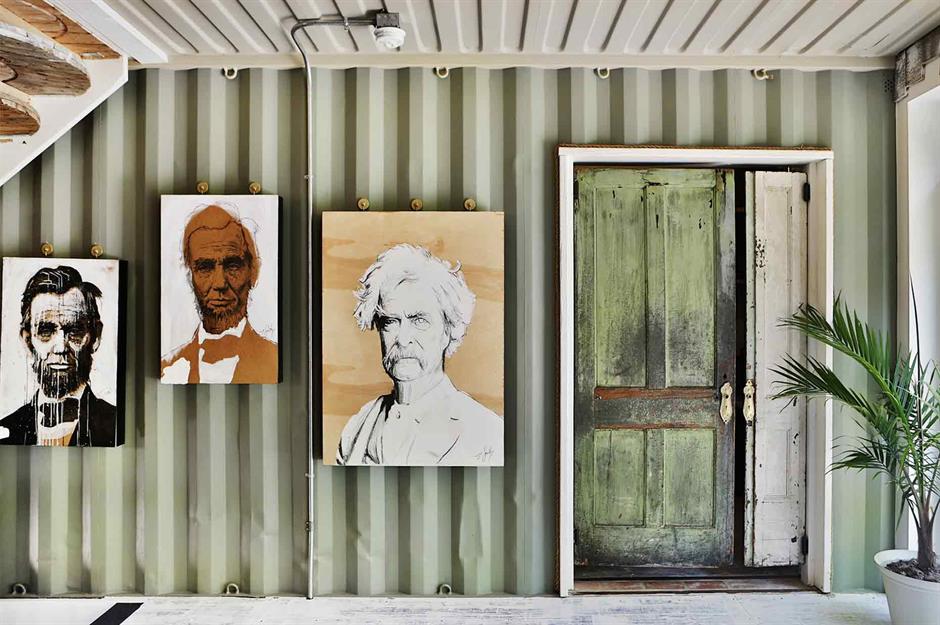
While drywall has been used in parts, swathes of the container's corrugated skin have been left exposed. “If we’re going to build with containers we want to show off that feature because it’s much more appealing than just a flat wall,” says Zack.
Meanwhile, the home's metal exterior was coated with closed-cell spray foam insulation to create a vapour barrier and help regulate the internal temperature – metal is a great conductor of heat, which can lead to cold living areas in the winter and a hot interior come summer.
Innovative heat sources
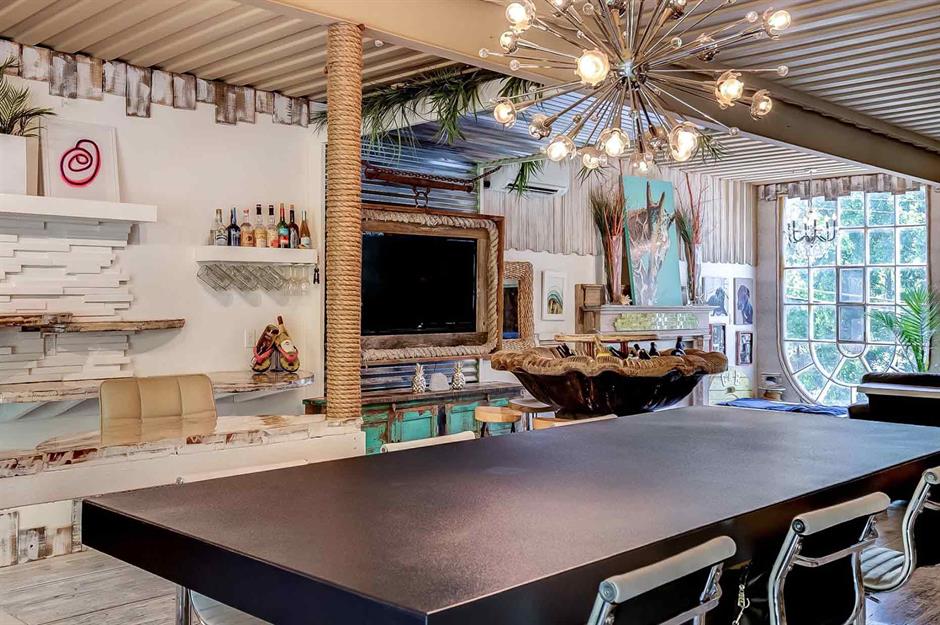
To ensure the home is comfortable all year round, they installed an energy-efficient Mitsubishi heat pump and floor vents, while ductless mini-split air-conditioning units were added upstairs where the three bedrooms are situated. Cleverly, each unit can be controlled individually so that Brie and Zack only heat the spaces they're actually using.
A creative canvas
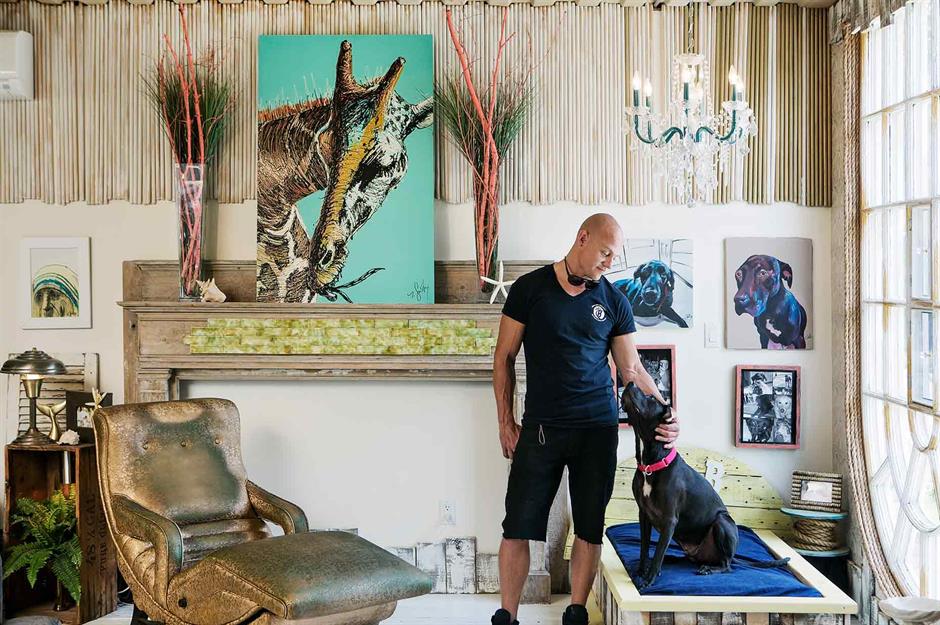
Having built their home from scratch, the pair are in the unique position of having created almost everything around them. "This entire house is like a sculpture that we get to live in," says Zack.
While the fabric of the house is a showcase of their creativity, it's also a canvas for Zack to display his own work too: "I love that not only is this structure a piece of art, but I get to fill it with my art,” he adds.
Custom kitchen design
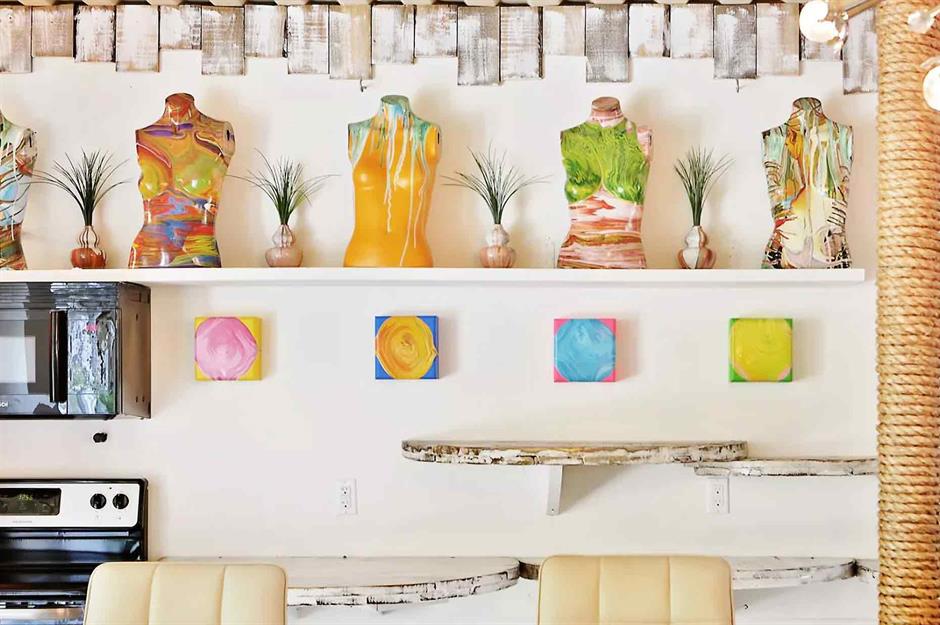
When it came to the design of their kitchen, the couple decided to get rid of cabinetry altogether: "Stuff gets lost in the back, you only use a few things in the front and it’s more difficult to get to things," explains Zack.
Eager for an airy space that didn't feel enclosed, they settled on open shelving and a large breakfast island. They built a walk-in pantry to store food and kitchenware out of sight, keeping the kitchen surfaces uncluttered and open.
Party centrepiece
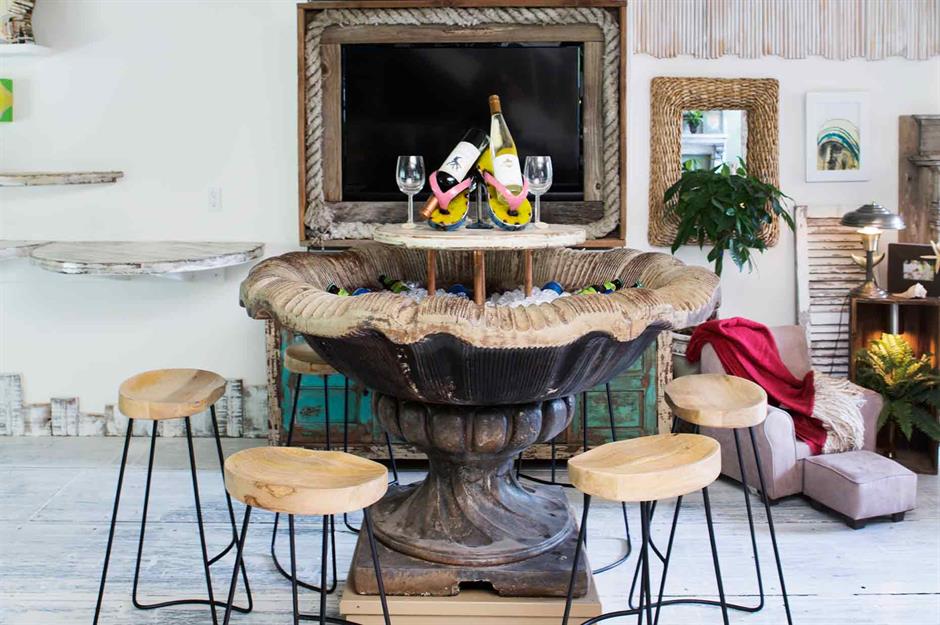
Befitting the home's repurposed structure, the majority of the interior is furnished with upcycled materials too. Zack stumbled across a six-foot-wide fountain bowl at a local landscaping shop – something most shoppers wouldn't raise an eyebrow at.
However, the Smitheys are practised at seeing objects not as they are, but for what they could be. With a hole drilled in the middle and drainage added, it became an ice bucket for entertaining, complete with an elevated cable spool table.
Reclaimed church windows
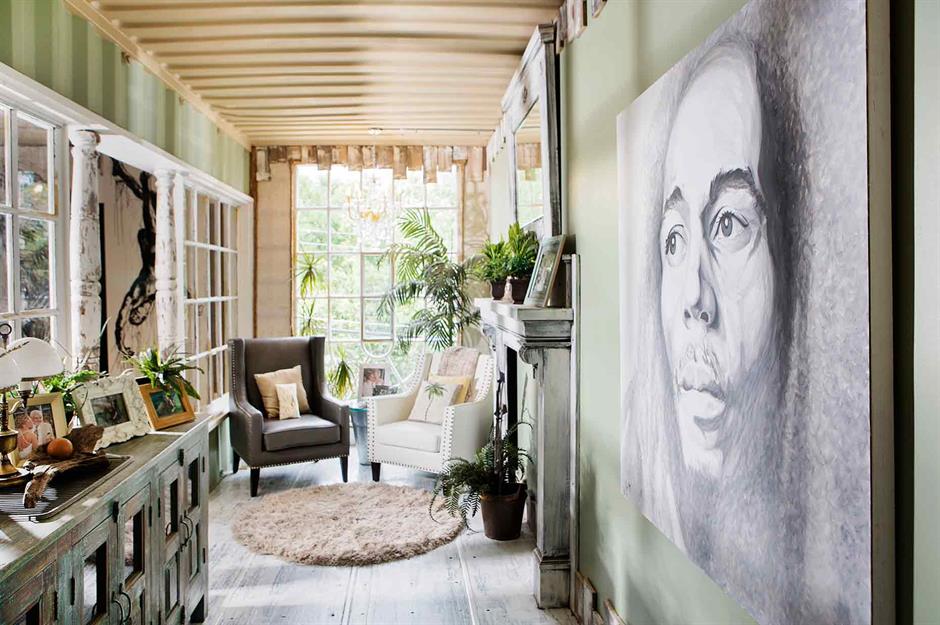
Despite being a new-build home, the container's living spaces are steeped in history and character. "Using all of these repurposed materials gives this structure a sense of life... it feels like it’s been lived in," muses Zack.
On the main floor, 100-year-old church windows act as a smart room divider between the open-plan living space and a cosy sitting area. When a nearby church underwent a refit, Zack and Brie were quick to snap up the historic panes and integrate them into their design.
Salvaged staircase
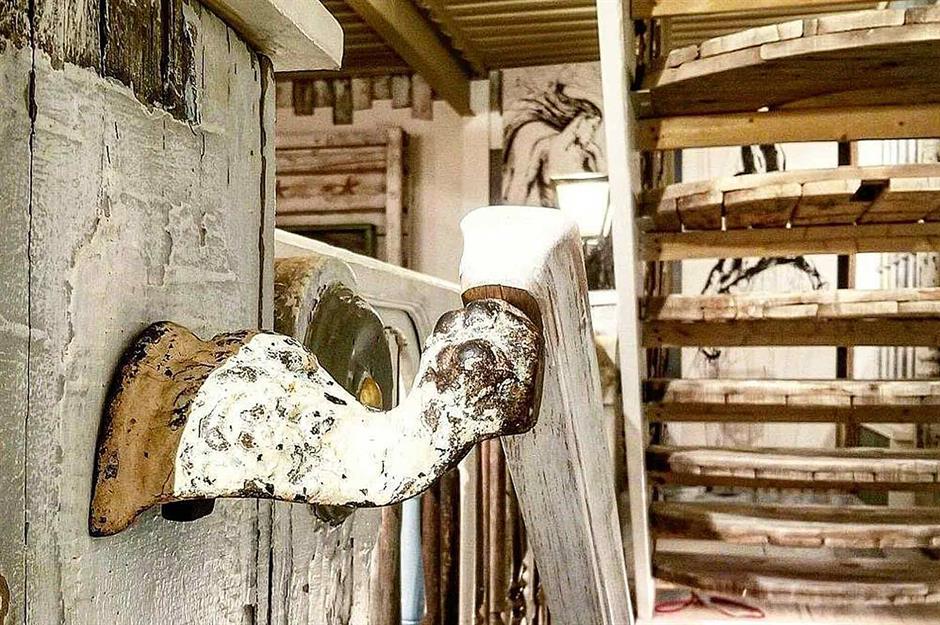
The spine of the house, the magnificent staircase that connects the three levels, is another example of how the pair have breathed new life into reclaimed fixtures. Zack made the treads from big wooden cable spools, cutting the discs in half and setting each one at a slightly different angle. Pictured here, an old clawfoot from a bathtub connects the bannister to the support post, while salvaged lanterns top each post.
Space-efficient floor plan
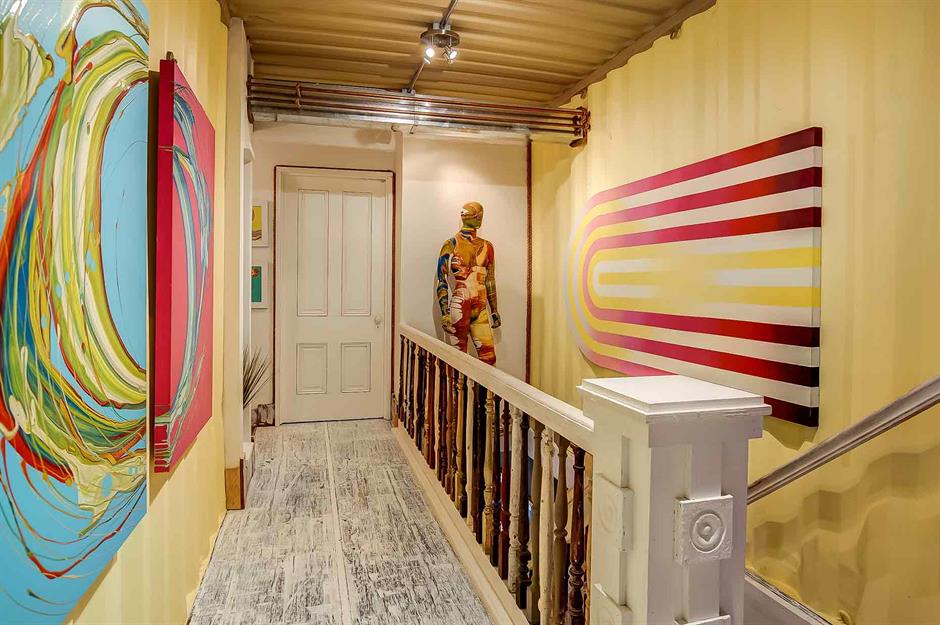
Upstairs, the top level accommodates a bathroom, laundry room and three bedrooms, including the master suite.
Most notably, this floor is home to one of the only hallways in the house. “Hallways are kind of a useless thing that eats up floor space, it’s just a way to get from one room to another, so if I can combine the rooms without having hallways it opens up the space and you have much more function," explains Zack.
Fabulous floating bed
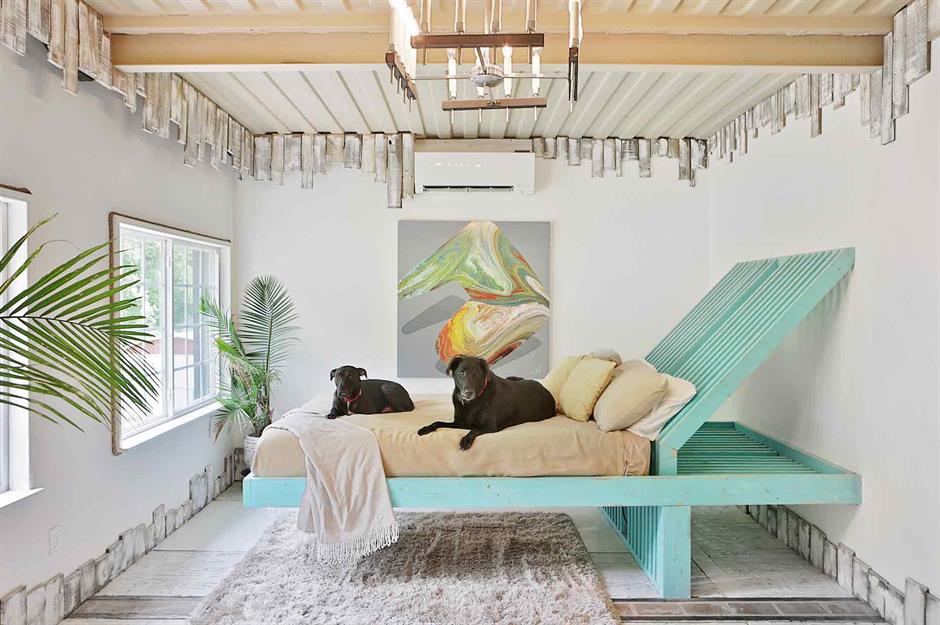
The spacious master bedroom spans the entire length of the back of the house. Tired of uncomfortable headboards, Zack set about designing an innovative bed for the room: "The headboard is at a 45-degree angle so you can easily recline, instead of a standard vertical design that cranks your neck.” Anchored to the wall and floor, the bed seemingly defies gravity, cantilevering out above the wooden floor – it's one of Zack's favourite pieces in the house.
Radical repurposing
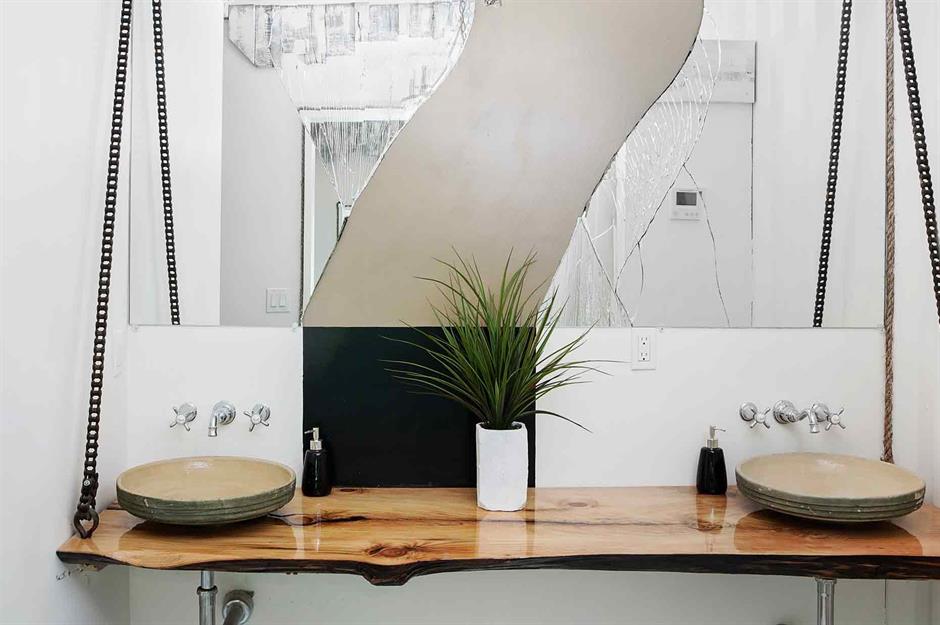
In the master bathroom, the vanity is suspended on chains from an old combine harvester, while the basins comprise of two salvaged birdbaths. One of the most intriguing features, the mirror was broken and reassembled on the wall to span the sink unit, with a piece of painted wood slotted into the middle to elongate it.
Backyard hangout
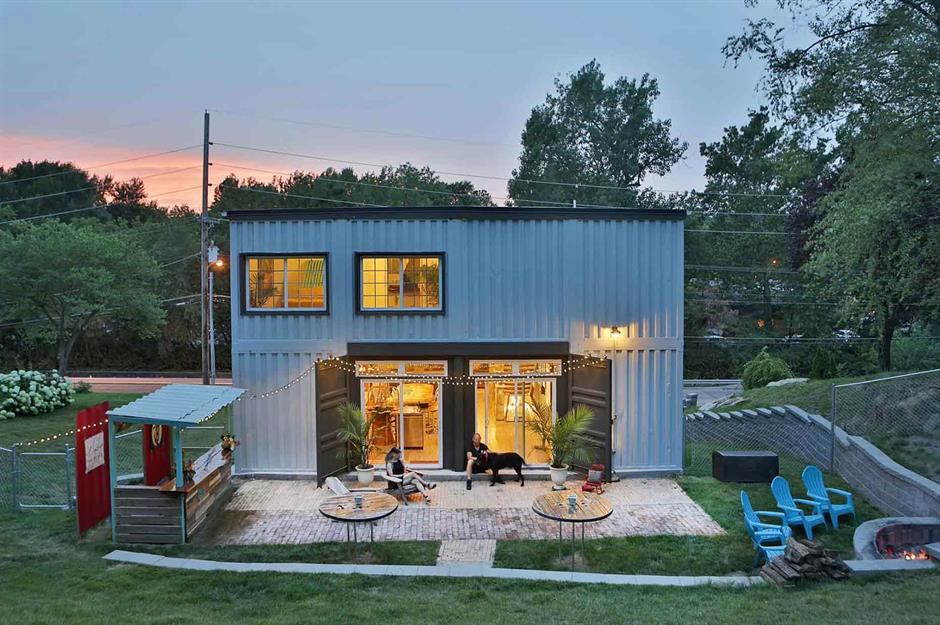
The main living area leads out onto the patio, which is nestled on the slope of the hill. Ideal for alfresco entertaining, the stylish Tiki bar was built from leftover wood and steel from the home's construction, another ingenious example of the Smithey's low-waste ethos.
In the future, Zack and Brie have plans to transform the home's roof into a terrace – Zack says he'd like to build a bridge running from the top of the hill onto the rooftop.
A burgeoning business
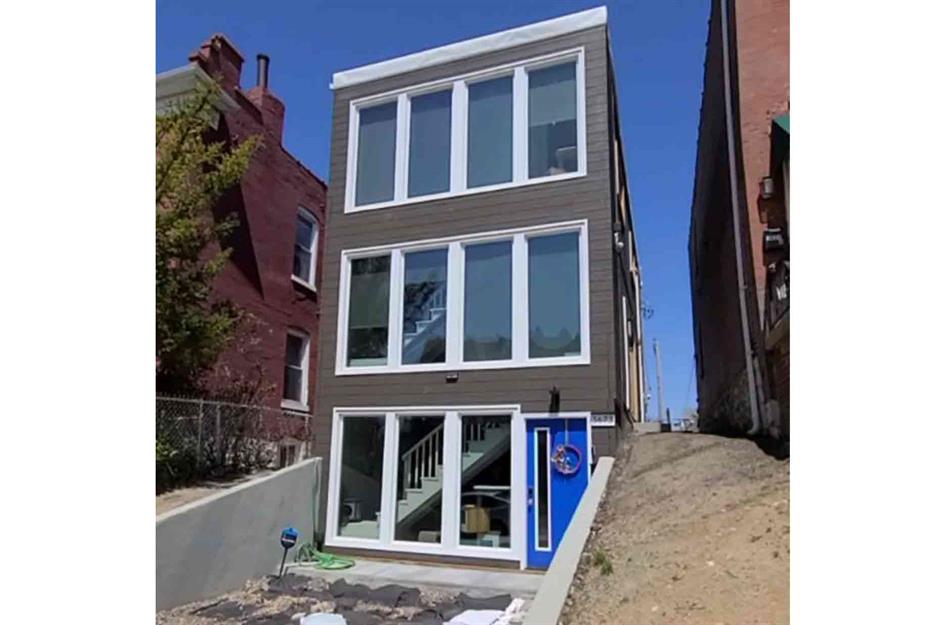
Since completing their remarkable residence, Zack has even launched a consulting and design business to help other self-builders create their own container homes.
Pictured here is a project Zack designed and advised on for a client in St Louis in 2022. Comprised of four 40-foot shipping containers, the three-level room includes three bedrooms, three bathrooms and a walk-out basement. With its sleek, grey exterior and window-lined façade, you'd never guess this home's industrial roots.
Thinking outside the box
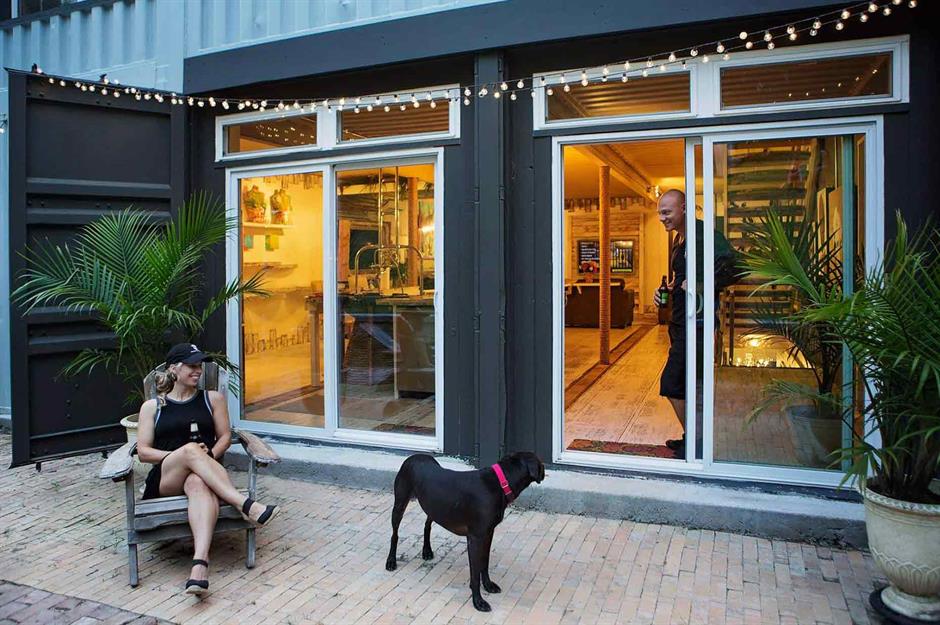
Thanks to their sheer determination and innovative thinking, Zack and Brie brought a one-of-a-kind residence to life – and now they're helping other homeowners to do the same.
When it comes to the future, however, change may be in the air: “I don’t know if our next home will be a container home... we have the tendency not to do the same thing twice, to keep evolving and growing," Zack concludes.
Love this? Follow us on Facebook for more unusual houses and homebuilding stories
Comments
Be the first to comment
Do you want to comment on this article? You need to be signed in for this feature